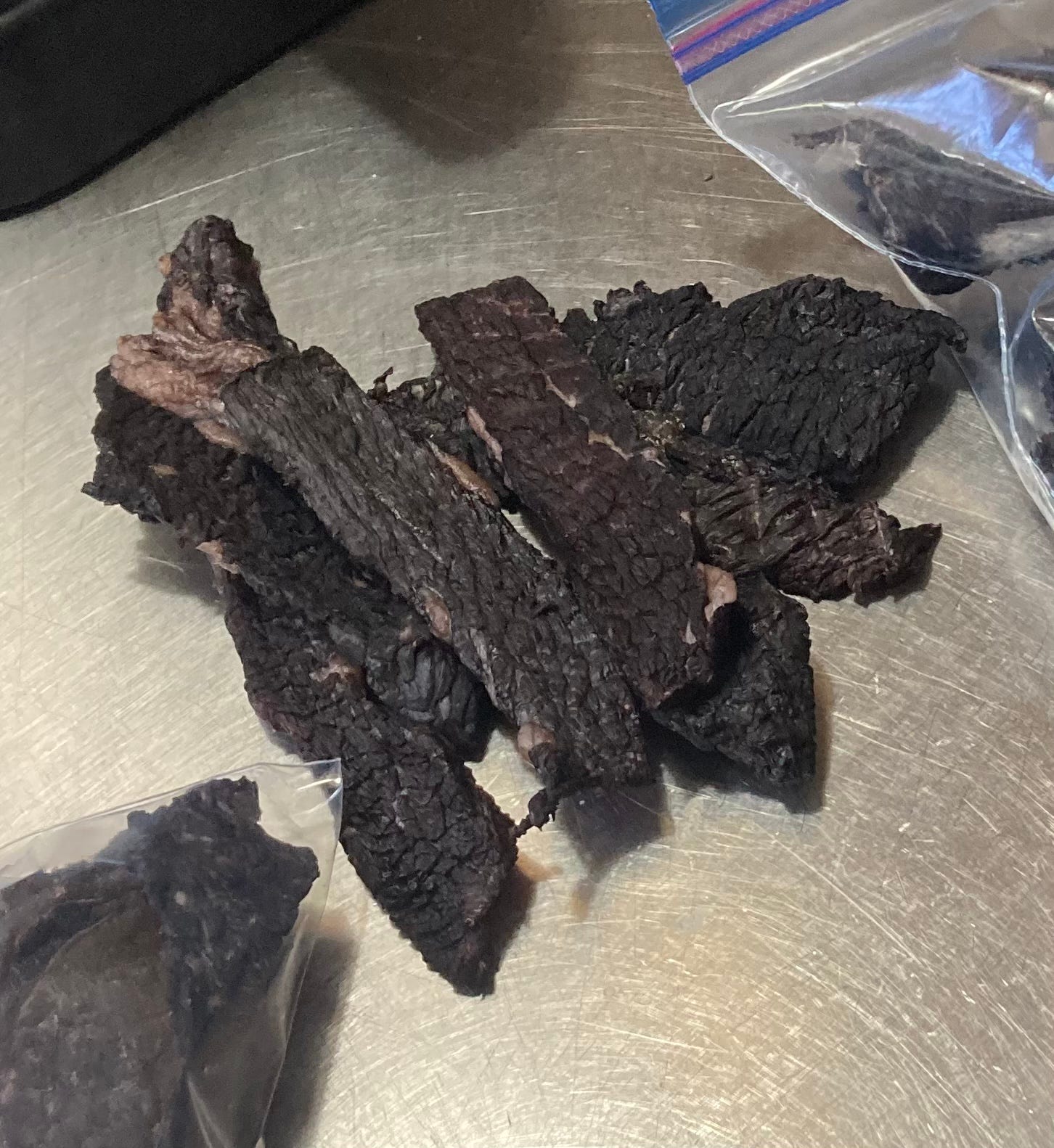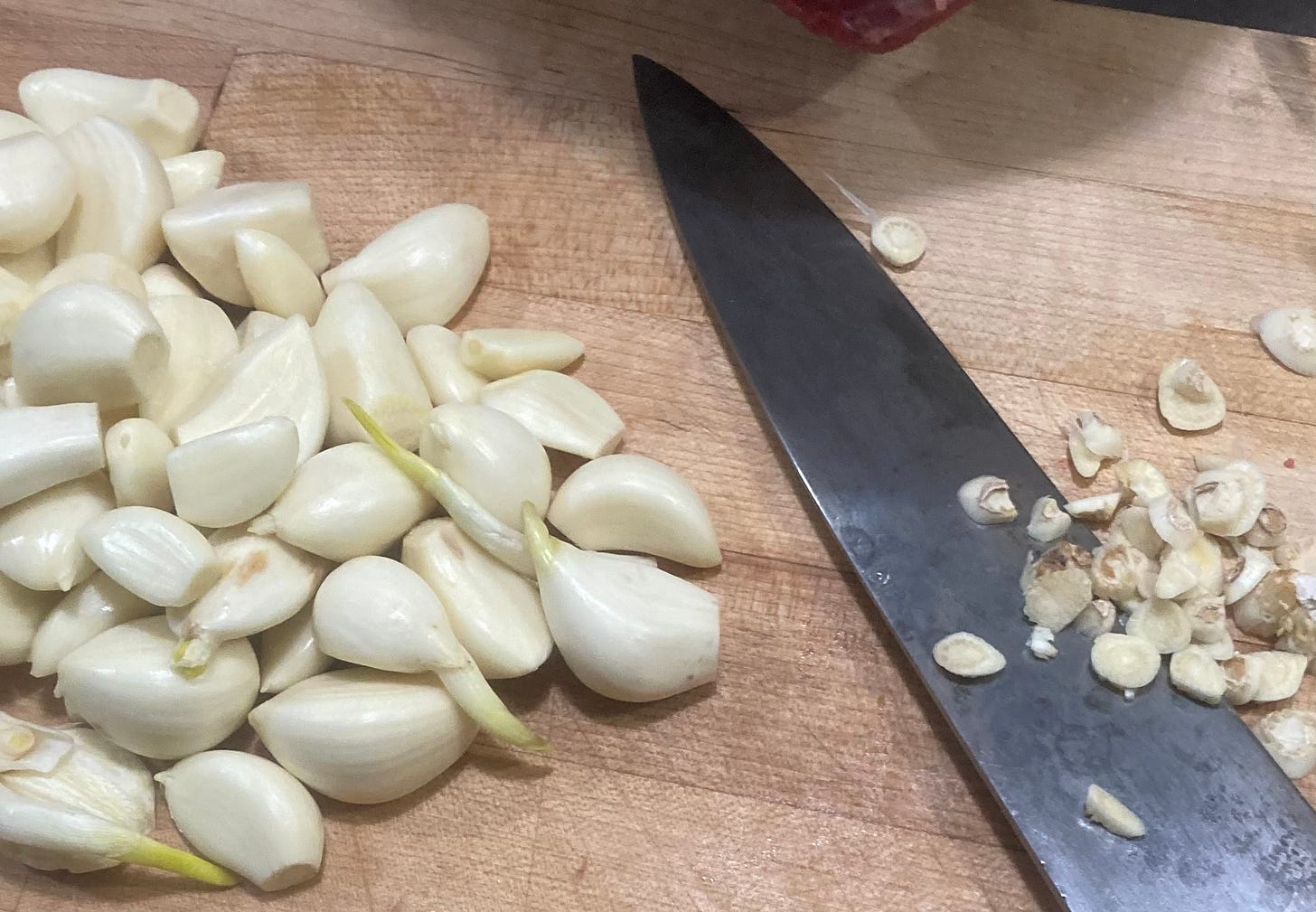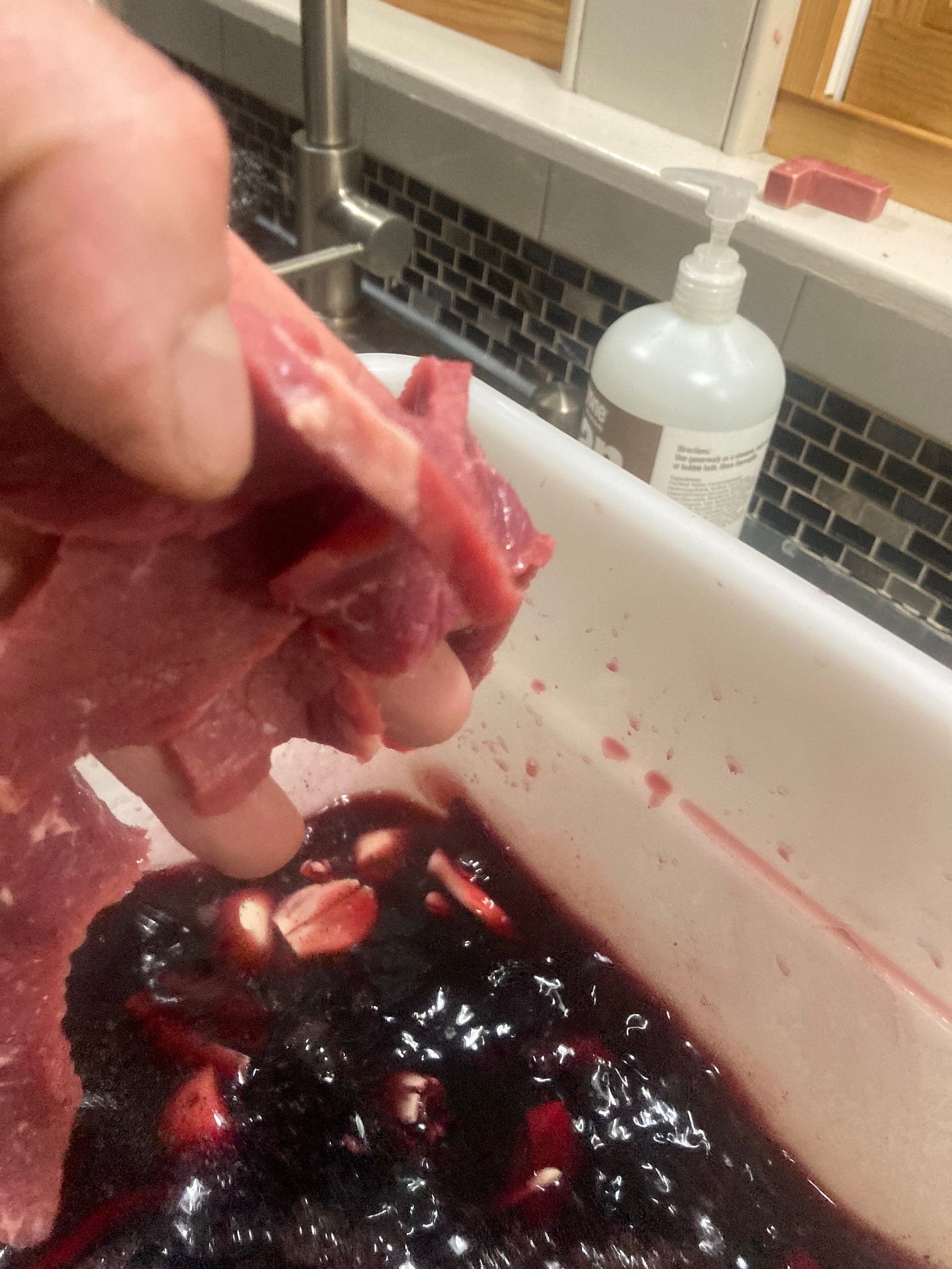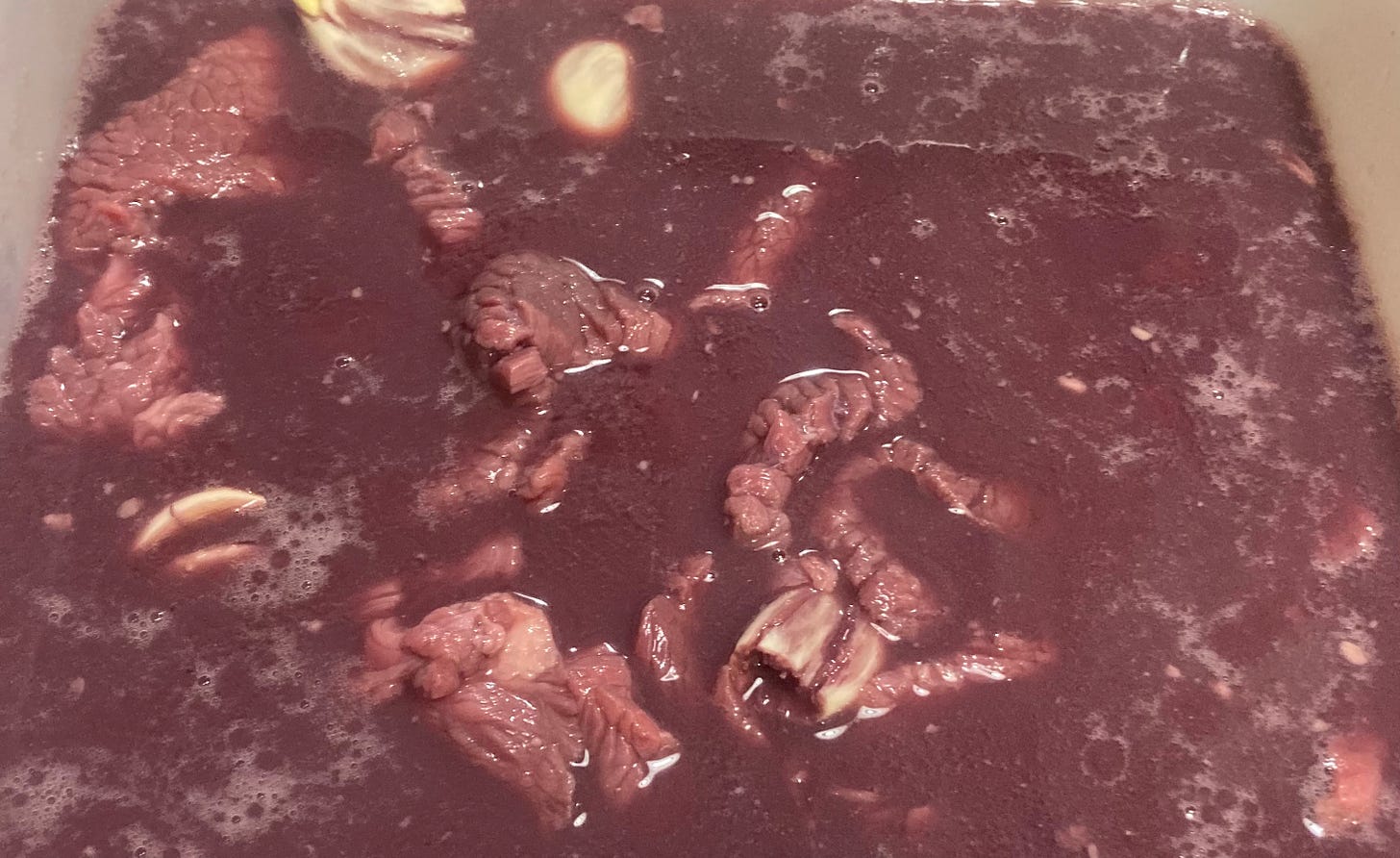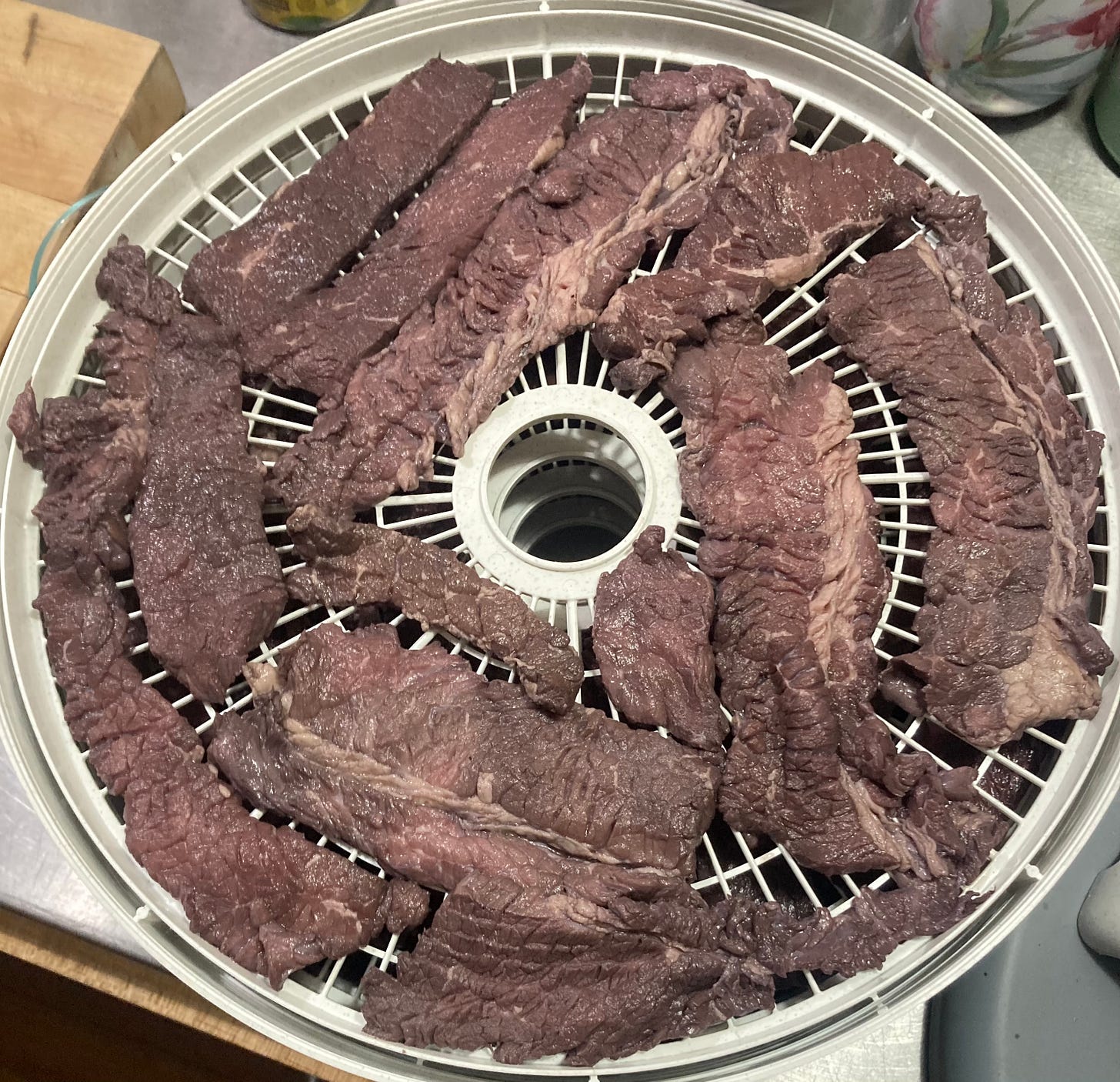I love beef jerky. But I always hated how salty, sweet, over-seasoned or (Dog help me) artificially moistened/tenderized most store bought is. I have been experimenting with different cuts and drying methods for years, and I have come up with something that is pretty damn good.
Drying is the method by which beef is preserved to make Jerky. Salting is another method of preserving meat. Actually, so is sugar curing, which leaves the end product sweet, and also chemical curing (like using nitrites and nitrates) which leaves the meat “plump and moist”. There is no reason to do all of those things at once, unless “sweet and salty” or “plump and carcinogenic” is your goal.
Also, drying and cooking are two entirely different things. If you buy a dehydrator and the instructions tell you to process meat for jerky at the “high” setting, which on my dehydrator is also marked 160 degrees, ignore that. 160 degrees is well done, not dry. Well…it is also dry. Different story.
They suggest 165 to kill off all of the bad stuff that may exist on your beef (or god forbid in your beef paste that there are recipes for using to make a Jerk’s Jerky) so they cannot be sued. Use good beef. Absolutely do not use beef paste, and…Use the lowest setting!
For years, I would make a big batch of this at the beginning of summer and send my two kids off to summer camp with a pound or so of jerky each. When the oldest was about sixteen and was packing up his batch, he said “dad! It’s like having cigarettes in prison! People wait all year for me to show up with this stuff.” A couple of the other campers, now grown, have offered to bankroll me to produce it commercially. For all of them, and for y’all here is the recipe.
Nowadays, with camp in the distant past, I make this when I need the byproducts to make demiglace; this is the reason I am posting. What you have left after making this is an important ingredient in another recipe. I guess now I make it just a little less frequently than once a year, and I mail some to each of my sons.
you will need (a food dehydrator and):
(I forgot to take the traditional Photo of all the ingredients. What would have been in the before portrait: a pair of untrimmed briskets, two boxes of red wine, and a few heads of garlic)
about 6 pounds of meat. I used to buy two large briskets, they were the compromise between price and texture until my butcher suggested Tri Tip or London Broil. I wrote and posted this prior to that, so all of the rest of the pics are of Brisket…Except these two:
Unsliced above, sliced below, in top pictures the tri tip is on top, the london broil (also called “flank steak”) is low. Reversed below
:Eye round makes perfectly flavorful jerky, and it's about six bucks a pound, but no matter how you slice it it is tough. A nicely trimmed and well marbled entrecôte (that which you slice NY strips from) at about sixteen dollars a pound (10 percent of which is not usable for making jerky) makes phenomenal jerky. Since I made this batch, I have been noticing bottom round. The eye is nicely marbled, but there is a “cap” which may mean a waste percentage.
Basically, multiply the cost of the fresh meat by 10 and you will get the per pound price of the jerky. If it looks high, go to the local 7-11 and look at just how much you pay per ounce of store bought.
About two gallons ‘big’ red wine. “Big” being bold, rich and…you know…big. A cheap box or jug wine is what we are looking for here, not a Lafitte-Rothschild. Carlo Rossi has some better than average, as does Bota. I am sure there are others out there. Try some, and if it is bitter, sweet, too Tannic, or otherwise surprisingly unbalanced, skip to another.
Three or four heads of garlic, peeled, heeled, and crushed
onions are an option, I sometimes slice a big one in
If you are only making jerky, and have no intention of going on to demiglace, then you might experiment with other things. Maybe saki instead of wine with a little soy sauce and ginger; I made a really good batch once with tequila and lime. Just remember, that makes the jerky even more expensive, as you are throwing away all of that tequila. I imagine the saki and ginger would make a really nice sauce for some beef stir fry, or a nice base for hot and sour soup.
In a huge container (but one that will still fit in your fridge) mix the red wine and crushed garlic
Then trim and slice (accross the grain) your meat
Veins of fat and marbleization are really good. Sinew is really bad, but impossible to avoid entirely.
when all of the beef is sliced (not as you are slicing), start to drop it into the wine and garlic. If you do it all at once, you will get a much better product, if you do a little at a time, the blood will start to draw from the first beef, and the beef near the end will be in a marinade of much less wine concentration. By doing it all at once, you get a better dispersion.
See the change?
Set in the fridge, covered, over night.
The next day, using tongs, pick out half of the beef one strip at a time. This will leave enough room in the liquid to real get a good mix on the rest. Swirl it all around, now put back the first half. Do this twice more over the course of about four days. Three days not long enough, ten is pushing it.
Drain (save the liquid! Even if you are not making demi glace, it is good for something!)
then lay out the first batch in your dehydrator.
The brand I use now sells additional trays. You can stack 1/2 again as many as are recommended by the machine manufacturer because you do not care if it gets evenly hot enough, all you are worried about is air circulation.
This is what it looks like finished, between 8 and 16 hours later. Some time during that interval, I flipped all of the pieces and shuffled the trays to make for more even drying
The time depends on ambient humidity, how thick your slices are, and how many trays are in your stack.
Just fill the trays again and repeat until all the beef is dried.
I portion into Ziplocks depending on the recipient (I like the fattiest, my wife likes the leanest, and the boys like a mix. Who would have thought?). Leave the ziplocks opened in the fridge for a day to avoid condensation in the bag which will lead to much faster spoilage. If you don’t plan to finish eating or sharing this in less than three weeks, you might invest in some desiccants. The silica bags in store bought jerky or in other products is reusable, just microwave them for a few seconds or minutes depending on their size. You can probably use ones that come out of vitamin bottles with confidence, but never from other pill bottles, and I would not use the ones that come with electronic parts, as they might not be food grade.
I hope you enjoy this as much as my kids and I do.
And here is the liquid gold that keeps me making Jerky.
It is a key ingredient in Demi Glace, which will be a future post. In order to make Demi Glace, you must first clarify a Beef/veal stock then double it with red wine. The way I was taught to clarify a stock involved egg whites and ground veal. Egg whites are albumin, and blood is mostly albumin (thats why Boudin Noir works), and when I couldn’t bear to throw away all that wine from a jerky foray, I tried mixing it into a stock and made the most astounding discovery.
Two birds.
One stone.



